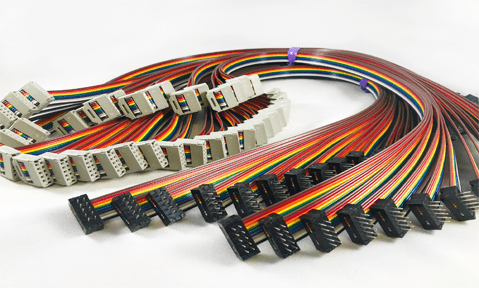When it comes to our gadgets, whether it’s a laptop, gaming console, or smartphone, one thing is clear: they need to stay cool. That’s where heat sinks come in. But what exactly is a heat sink? Why are they so important? Let’s explore the science behind effective cooling.
What is a Heat Sink?

A heat sink is a device designed to absorb and dissipate heat away from electronics. Think of it as a sponge soaking up water, but instead, it’s soaking up heat. When electronic components like CPUs and GPUs work hard, they generate heat. If this heat isn’t managed well, it can lead to overheating, which can damage the components and reduce their lifespan.
How Do Heat Sinks Work?
Heat sinks work by using materials that conduct heat well, like aluminum or copper. These materials have high thermal conductivity, meaning they can move heat away from the source quickly. The heat sink has a large surface area, often with fins, which allows more heat to escape into the air.
Imagine blowing on a hot cup of coffee. The more surface area there is, the faster it cools down. That’s the basic idea behind heat sinks. They increase cooling efficiency by maximizing the area that interacts with the air.
Types of Heat Sinks
There are several types of heat sinks used in various devices. Here are a few common ones:
Passive Heat Sinks
These heat sinks don’t require any power to operate. They rely on natural convection—the movement of air due to temperature differences. When hot air rises, cooler air takes its place. As the air moves around, it carries heat away from the heat sink.
Active Heat Sinks
Active heat sinks use fans or pumps to increase airflow over the heat sink. This method is more efficient than passive cooling and is commonly found in computers and gaming systems. An active heat sink is like having a fan at a summer picnic. It helps keep things cool and comfortable.
Heat Pipes
Heat pipes are advanced heat sinks that use a special fluid to transfer heat quickly. They can be very efficient, making them ideal for high-performance applications. Picture a water slide: it quickly moves people from the top to the bottom. Heat pipes move heat from hot areas to cooler ones in a similar way.
The Benefits of Using Heat Sinks
Using heat sinks offers several advantages:
- Prevent Overheating: By removing excess heat, heat sinks help protect sensitive components from damage.
- Increase Longevity: Keeping devices cooler can extend their lifespan, saving money on replacements.
- Improve Performance: Electronic devices can run faster and more reliably with effective cooling.
Common Applications of Heat Sinks
You’ll find heat sinks in many popular devices. They’re essential in:
- Computers: Most systems have heat sinks on their CPUs and GPUs to manage heat during heavy use.
- Smartphones: Heat sinks help keep mobile devices cool, especially during gaming or video streaming.
- Home Appliances: Devices like refrigerators and microwaves also use heat sinks to maintain optimal performance.
Heat Sinks Explained: The Science Behind Effective Cooling
In the world of electronics, heat is a silent enemy. It can reduce performance, shorten lifespan, and even cause catastrophic failures. This is where heat sinks come into play. They are essential components in managing thermal energy in devices ranging from computers to LED lights. Let’s dive deep into the science behind effective cooling through heat sinks.
What Is a Heat Sink?
A heat sink is a passive component that dissipates heat generated by electronic devices. It absorbs and disperses this heat into the surrounding environment, preventing overheating. Typically made from metals like aluminum or copper, heat sinks come in various shapes and sizes depending on their application.
How Do Heat Sinks Work?
Heat sinks operate on basic principles of thermodynamics. When an electronic component generates heat, it transfers that energy to the heat sink via conduction. The larger surface area of the heat sink allows for more efficient dissipation of this thermal energy into the air through convection.
Key Processes Involved:

1. Conduction: This is the transfer of heat through direct contact. The base of the heat sink makes contact with the hot component.
2. Convection: Once heated, air molecules around the sink gain energy and rise, allowing cooler air to take their place.
3. Radiation: Although less significant than conduction and convection, some thermal energy is lost as infrared radiation. Types of Heat Sinks
Heat sinks come in various designs tailored for specific applications:
1. Passive Heat Sinks
These do not have any moving parts or fans; they rely solely on natural convection to cool down components. They are commonly used in low-power applications like small electronics or LED lighting.
2. Active Heat Sinks
Active systems incorporate fans or other cooling mechanisms to enhance airflow over the surface area of the sink. These are typically found in high-performance computers and gaming consoles where excess heat generation is a concern.
3. Liquid Cooling Systems
While technically not traditional “heat sinks,” liquid cooling systems use liquid coolant to absorb and transport heat away from components more efficiently than air alone can achieve.
Factors Affecting Heat Sink Performance
Several factors influence how well a heat sink performs:
Surface Area
The larger the surface area, the more effective a heat sink will be at dissipating heat. Fins are often added to increase surface area without significantly increasing volume.Material Conductivity
Materials with high thermal conductivity (like copper) transfer heat more effectively than those with lower conductivity (like aluminum). However, aluminum’s lightweight nature makes it popular for many applications despite its lower conductivity.
Airflow
The movement of air plays a crucial role in cooling efficiency. A well-placed fan can significantly enhance performance by increasing convective currents around a passive heatsink.
Temperature Differential
The greater the temperature difference between the hot component and its surroundings, the faster it will cool down due to increased convection rates.
Designing an Effective Heat Sink
When designing an effective heatsink, engineers must consider several parameters:
1. Thermal Resistance: This measures how well a material resists conducting thermal energy away from its source.
2. Size & Shape: Depending on space constraints and required performance levels.
3. Fin Design: The shape and spacing of fins can greatly affect airflow patterns and efficiency.
4. Mounting Method: Ensuring good contact between components minimizes thermal resistance at interfaces.
5. Coatings & Treatments: Anodizing aluminum or applying thermal interface materials can improve performance by enhancing contact quality or reducing oxidation effects.
Applications of Heat Sinks
Heat sinks find application across various industries:
1. Computing
In computers, CPUs and GPUs generate substantial amounts of heat during operation—often exceeding safe limits if not managed properly—making robust cooling solutions critical for maintaining performance stability.
2. Automotive
Modern vehicles use multiple electronic components that require effective cooling solutions for longevity and reliability—especially as electric vehicles become mainstream.
3. Telecommunications
High-frequency signals generate considerable amounts of waste energy as they travel through circuits; thus efficient cooling mechanisms are vital for maintaining signal integrity over long distances.
4. LED Lighting
LEDs produce less waste energy than traditional bulbs but still require proper management to ensure optimal brightness without overheating issues affecting lifespan or color accuracy.
Common Myths About Heat Sinks
Despite their widespread use, several misconceptions persist about heatsinks:
– Myth 1: Bigger is always better.
– While size matters regarding surface area, excessively large heatsinks may lead to diminishing returns based on available airflow conditions.
– Myth2: All materials perform equally well.
– As discussed earlier, material choice impacts efficiency significantly; choosing lower-quality materials leads directly to higher operational temperatures.
– Myth 3: You don’t need maintenance once installed.
– Dust accumulation
Conclusion
In the world of electronics, heat sinks play a vital role in keeping devices cool. They absorb and dissipate heat, protecting critical components from damage. Understanding how heat sinks work gives us insight into why our gadgets function smoothly. As technology continues to advance, these cooling solutions will remain crucial for performance and reliability. So next time your device runs cool as a cucumber, remember the silent hero working behind the scenes: the heat sink.







